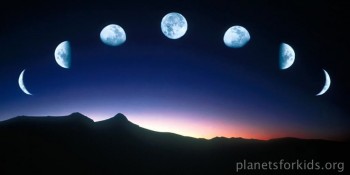Have you ever heard the wolf cry to the blue corn moon? And what the hell is a blue corn moon?
Today is a good day to think about the moon. At 1:11 p.m. EDT, the sun and moon reached opposite points in the sky — what we call the full moon. Of course, you couldn’t tell that because, at 1 in the afternoon, the sun was up and the moon was not. But you may notice the full moon rising in this evening’s eastern sky, just after the sun sets in the west.
We think of that as the normal order of things: each evening, the sun sets and the moon rises. But in truth, that only comes close to occurring for three or four nights in a row per lunar cycle (that is, per month or so). The reality is that the moon rises somewhere around 40 to 60 minutes later each day. After two weeks or so, the moonrise catches up with the sunrise and we experience a new moon, the next due on March 30.
If you think a bit deeper about this, it makes perfect sense. Tonight, the moon will appear full because the sun is able to shine on the full surface of the moon facing the Earth. That can only happen when the moon is opposite the sun in the sky — or, more scientifically, when the Earth is positioned between the sun and the moon. And even though we think of the full moon as a nightlong event, there is only one brief moment — 1:11 p.m. EDT this time — when the moon is 100 percent full; by tonight, it will already be less than full.
As the moon rises later each day, the sun, moon, and Earth move out of alignment, causing earthlings to see more and more of the unilluminated side of the moon, leading to the progressively smaller-appearing, or waning, crescent moon. About one week after full, you won’t see the moon in the evening because it won’t rise until the middle of the night, as the half-illuminated last quarter moon.
A week later, the moon will seem to disappear from the sky altogether. It will rise in the morning and be completely in shadow because it is between the Earth and sun — the new moon.
In the days that follow that, you’ll start to see the waxing crescent setting just after the sun in the western sky. By week three, the first quarter moon will rise mid-afternoon, be half-illuminated overhead at sunset, and fall below the horizon in the middle of the night. Finally, the cycle repeats with the next full moon.
In the days before hunky firefighters gracing the pages of commercially produced calendars, people looked to the moon cycles, in tandem with the length of the day, to plan their migrations, hunts, and farming. Many cultures named each full moon to reflect seasonal associations. Without trespassing too much into Lingwizardy territory, I’ll give one example: the full moon closest the spring equinox — the full moon we in the Northern Hemisphere are experiencing today — has been called the Worm Moon by some peoples because it is around the time when earthworms begin to reemerge from the thawing ground. The full list of moon names is interesting; check it out here.
The lunar cycle is 29.53 days long, as compared to most of our calendar months being 30 or 31 days. As a result, there are sometimes 13 full moons in a year; by necessity, at least one month in those years will have two full moons. Many folks understand this quirk is called a blue moon. (So “once in a blue moon” isn’t all that uncommon; it happens seven times every 19 years!) The traditional definition of a blue moon is actually a bit different: it refers to the third of four full moons in a single season (as opposed to the standard one-per-month, three-per-season).
Now we can answer the great question of Pocahontas. Native Americans named the full moon nearest the autumnal equinox the Corn Moon because it is when the corn was ready to be picked; this is what we still today call the Harvest Moon. So, it stands to reason that the “blue corn moon” would be when the Corn Moon also happened to be a blue moon, right?
Unfortunately, no. For one thing, the Corn Moon, being the one closest to the autumnal equinox, could never be the third of four in the season. For another, songwriter Stephen Schwartz explained that he made up the phrase because he liked the sound of it:
In preparation for doing the lyrics to Pocahontas, I read a lot of Native American poetry. One of the phrases I came across, in a love poem, was: “I will come to you in the moon of green corn.” The phrase stuck in my head, but I didn’t think the lyric: “Have you ever heard the wolf cry to the green corn moon” really worked, because of the association of the moon and green cheese, plus the “ee” sound in it, etc. So I changed it to blue corn moon, which I thought had a nice resonance to it because of the phrase “blue moon”…
In other words, Walt Disney misled us. Next thing you know, we’ll discover not all girls can be princesses and animals don’t speak English. But thanks to this primer on lunar cycles, you’ll still be able to impress all your friends at parties.
